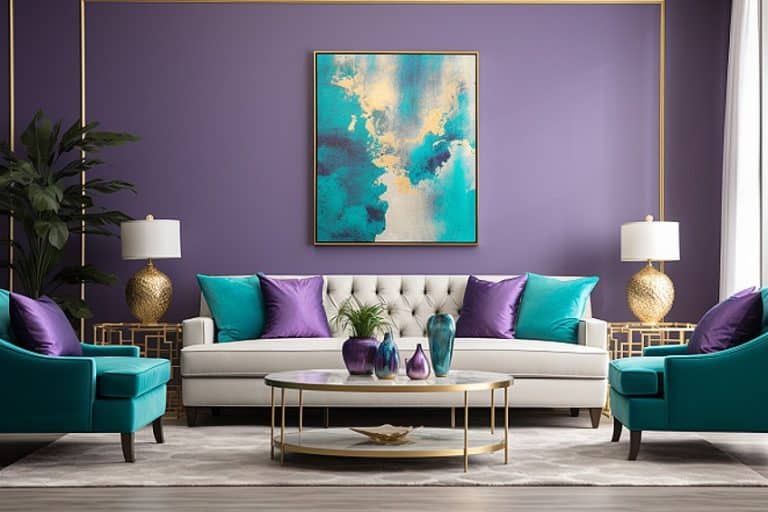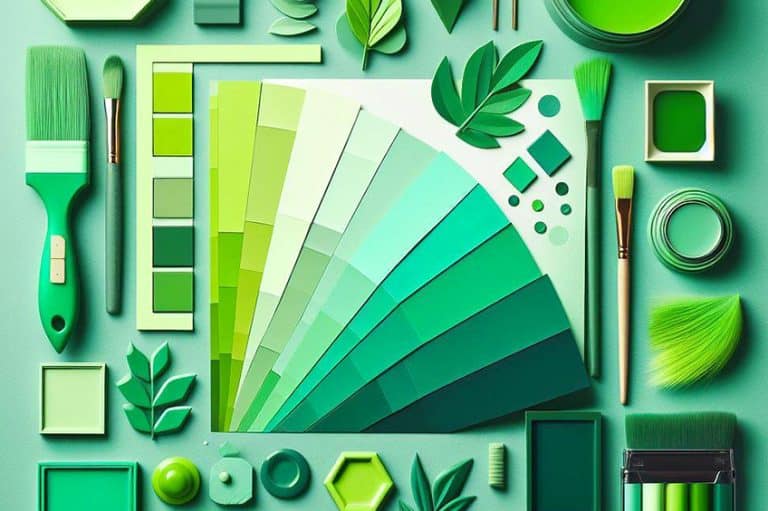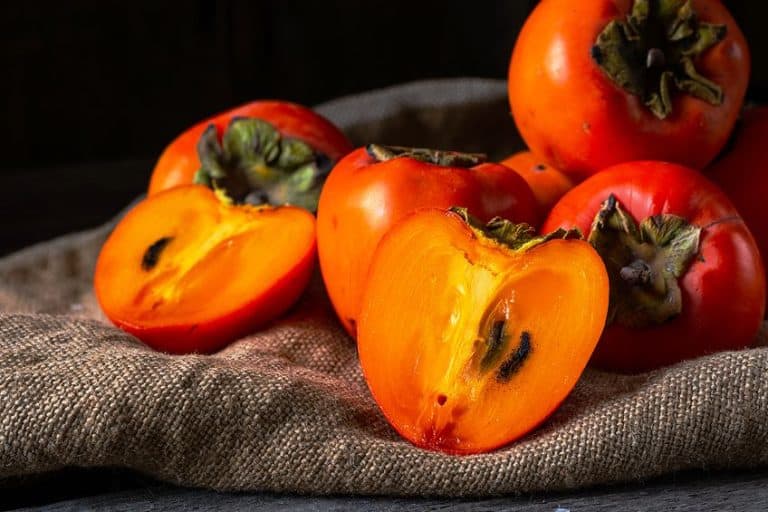Lilac Color – Exploring Lilac Purple and the Colors That Go With It
Like mauve or taupe, lilac is most probably not the first color you think of when somebody asks what your favorite color is. This is also true in the design industry; however, the lilac color has become more popular in recent years. To see why, let us take you on a journey to learn a bit more about this unique color.
What Is the Color Lilac?
You could say the color is lilac purple, as it is a shade of purple and is so named after the lilac flowers, which are of the same color. The lilac color can be described as being a lighter shade of purple, with a slight pinkish undertone. However, sometimes it may become confused with a lavender color, so what is the difference when it comes to lavender vs. lilac?
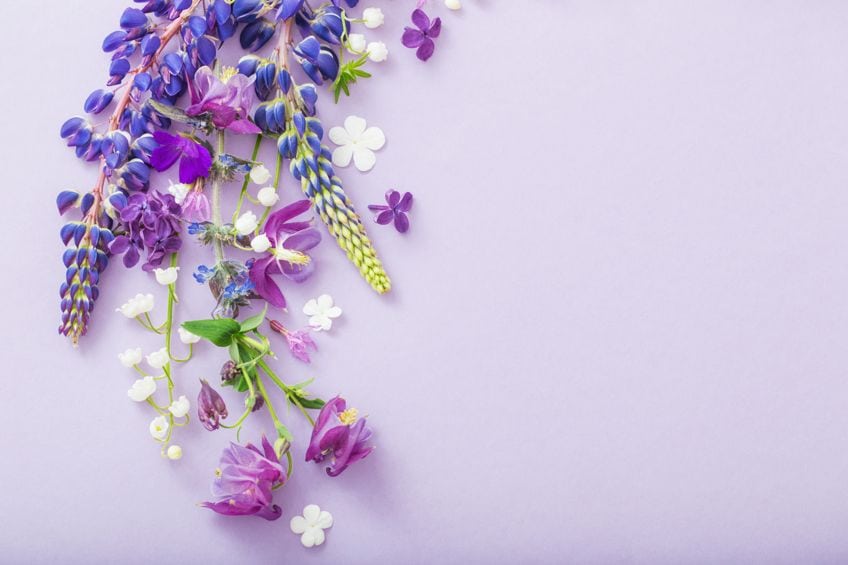
These are two different colors but come from the same family of colors. Both are considered shades of purple, however, lilac has a pink undertone, while lavender has a blue undertone. When looking for colors online, you can find them by what is known as hex codes. Other codes are also available for graphic design and printing, each telling us how much of each color is used to make a specific hue. The lilac color code for all of them is different from lavender as you will notice in the table below.
| Color Name | Lilac Hex Code | CMYK Lilac Color Code (%) | RGB Lilac Color Code | Lilac Color |
| Lilac | #c8a2c8 | 0, 19, 0, 22 | 200, 162, 200 |
Many people tend to confuse the two colors as the lilac color can also be associated more with the lavender flower color. This is because it is closer to the actual lavender color than the web-based version above. The lavender purple would be a closer match to lavender if you are looking for something more vibrant. Of course, there are also various shades of lilac purple as well, which we will be dealing with a bit further on.
When dealing with colors, and you look at color theory, you can get colors that are warm or cold. On the color wheel, these colors are usually found on opposite sides. Your reds, yellows, and orange colors are all warm, while the blues, as well as greens, are cold. So, when dealing with purple lilac, is it considered a warm or cold color?
When it comes to lavender vs. lilac, you might think they both fall under the same category. However, since lavender has more of a blue undertone, it is a cooler color than the lilac, which has more of a pinkish tint, and this makes it warmer.
Lilac Color: A Brief History
Lilac is closely linked to purple in this case, and one of the earliest known colors is royal purple or Tyrian purple. This color was obtained in the past from snails, which produced beautiful violet color. However, the process of obtaining and producing the color was extremely expensive, so it was mainly used by royalty, and those who had enough money to afford it. The first time the lilac was recorded as a color was in 1775.
Much later, during the mid-19 century, a chemist named William Harvey Perkin, accidentally discovered a mauve color when trying to synthesize quinine. This discovery led to the first synthetic-based dyes, and eventually to more synthetic dye colors, which became available to the masses because of the cheaper prices.
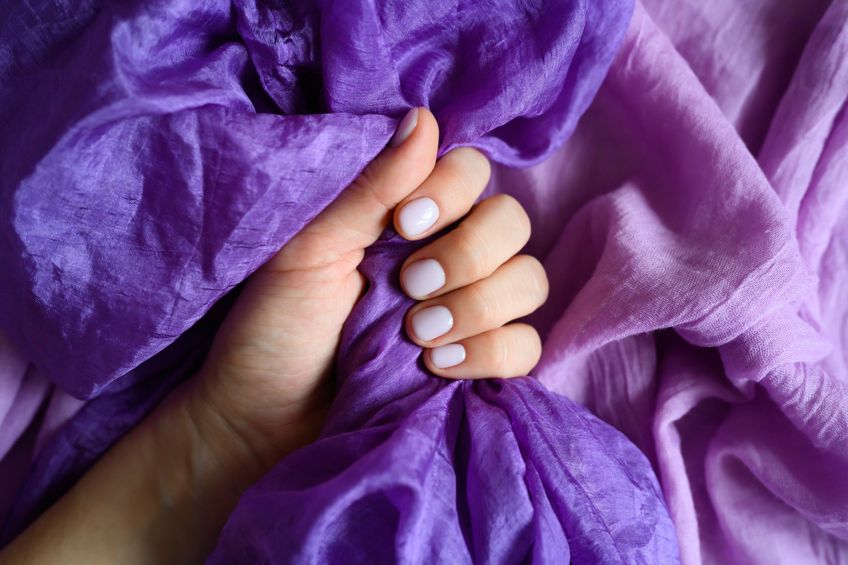
Lilac was a well-known color in the 19th century, as a color of mourning for widows during the last phase of the mourning ritual. This was common in both the Victorian as well as Edwardian periods, where the widows would wear black, to begin with, and after about a year, they could then start wearing colors like white or lilac.
Famous artists like Monet who was known for his Impressionist art often used violet and shades of violet-like lilac. In paintings, often the scenery like the sky, water, or other elements, was painted in various shades of violet. Other artists who became well-known for this include Picasso, Renoir, and Cézanne. Van Gogh himself even painted the Lilac Bush in 1889. Another painting example would be Monet, who painted the Water Lilies series of paintings from 1897 to 1899.

As an interesting fact, there was a hotel that was built on West Touhy Avenue in Lincolnwood, Illinois, known as the Hyatt Hotel, which became known as the Purple Hotel later in 2004. The hotel became quite popular because it was built with purple lilac bricks. The hotel was constructed during the 60s and had a few owners over time. Unfortunately, due to its association with a murder that happened years before, other unsavory activities, and various health violations, it was closed in 2007 and then demolished in 2013.
The lilac color has become more popular recently, especially in certain industries like interior design and fashion. First, it was Millennial Pink that was the color of the year in 2016, then Ultra Violet stepped in during 2018, which is close to a purple lilac, and now Veri Peri is the color of the year for 2022. The pinks and shades of purple seem to be making it to the top of the most popular list.
| Shade | Hex Code | CMYK Color Code (%) | RGB Color Code | Color |
| Millennial Pink | #f3cfc6 | 0, 15, 19, 5 | 243, 207, 198 | |
| Ultraviolet | #5f4b8b | 32, 46, 0, 45 | 95, 75, 139 | |
| Veri Peri | #6667ab | 40, 40, 0, 33 | 102, 103, 171 |
Meaning of the Lilac Color
Since lilac is so closely linked to purple, they share many common straights. Some of these include associations with creativity, spirituality, and royalty. However, lilac has more of a feminine feel and can be seen as a graceful color that is more mature than your shades of pink. Lilac is also both calming and welcoming. Even though it appears to be more mature, it also retains some feelings of innocence, youth, and wistfulness.
Since it has a more feminine appeal, it is also associated with nurturing, caring, compassion, and emotions.
Lilac can be used to bring about emotional expression and can help to reduce feelings of aggression. Lilac is more romantic than passionate like red, and represents the new beginnings of love, like springtime and the blooming of lilac flowers. On the negative side, since the color can be seen as being open to various ways of thinking and feeling, lilac can be associated with indecisiveness and immaturity.
Shades of Lilac
Like all colors, there are many different shades of lilac from colors that represent a lilac gray-purple to darker and lighter colors. Paler lilac shades can be almost white in appearance, while darker shades are closer to purple.
| Color Shade Name | Hex Code | RGB | CMYK (%) | Color Visualization |
| Aesthetic Lilac | #C098CC | 192, 152, 204 | 6, 25, 0, 20 | |
| Amethyst | #9966CC | 153, 102, 204 | 25, 50, 0, 20 | |
| Antique Lilac | #CCC8DB | 204, 200, 219 | 7, 9, 0, 14 | |
| Batik Lilac | #7E738B | 126, 115, 139 | 9, 17, 0, 45 | |
| Beach Lilac | #BDA2C4 | 189, 162, 196 | 4, 17, 0, 23 | |
| Blue Lilac | #7B679A | 123, 103, 154 | 20, 33, 0, 40 | |
| Bright Lilac | #DB91EF | 219, 145, 239 | 8, 39, 0, 6 | |
| Burnished Lilac | #C5AEB1 | 197, 174, 177 | 0, 12, 10, 23 | |
| Dark Lilac | #9C6DA5 | 156, 109, 165 | 5, 34, 0, 35 | |
| Dawn Lilac | #EAD6E5 | 234, 214, 229 | 0, 9, 2, 8 | |
| Deep Lilac | #9955BB | 153, 85, 187 | 18, 55, 0, 27 | |
| Dusty Lavender | #AC86A8 | 172, 134, 168 | 0, 22, 2, 33 | |
| Dusty Lilac | #d3cacd | 211, 202, 205 | 0, 4, 3, 17 | |
| Fragrant Lilac | #CFADBE | 207, 173, 190 | 0, 16, 8, 19 | |
| French Lilac | #86608E | 134, 96, 142 | 6, 32, 0, 44 | |
| Fresh Lilac | #E0DBD7 | 224, 219, 215 | 0, 2, 4, 12 | |
| Frosted Lilac | #D4D1DC | 212, 209, 220 | 4, 5, 0, 14 | |
| Gray Lilac | #D4CACD | 212, 202, 205 | 0, 5, 3, 17 | |
| Heirloom Lilac | #9D96B2 | 157, 150, 178 | 12, 16, 0, 30 | |
| Icy Lilac | #E6E9F9 | 230, 233, 249 | 8, 6, 0, 2 | |
| Indigo | #4B0082 | 75, 0, 130 | 42, 100, 0, 49 | |
| Intense Lilac | #775385 | 119, 83, 133 | 11, 38, 0, 48 | |
| Keepsake Lilac | #C0A5AE | 192, 165, 174 | 0, 14, 9, 25 | |
| Lady Lilac | #B28DC6 | 178, 141, 198 | 10, 29, 0, 22 | |
| Lavender | #E6E6FA | 230, 230, 250 | 8, 8, 0, 2 | |
| Lavender Gray | #C4C3D0 | 196, 195, 208 | 6, 6, 0, 18 | |
| Lavender Lilac | #CBC1D9 | 203, 193, 217 | 6, 11, 0, 15 | |
| Light Lavender | #DFC5FE | 223, 197, 254 | 12, 22, 0, 0 | |
| Light Lilac | #EDC9F9 | 237, 201, 249 | 5, 19, 0, 2 | |
| Lilac | #C8A2C8 | 200, 162, 200 | 0, 19, 0, 22 | |
| Lilac (Crayola) | #bc8ac2 | 188, 138, 194 | 3, 29, 0, 24 | |
| Lilac Ash | #D7CDCD | 215, 205, 205 | 0, 5, 5, 16 | |
| Lilac Blossom | #B7AAB6 | 183, 170, 182 | 0, 7, 1, 28 | |
| Lilac Blue | #8293AC | 130, 147, 172 | 24, 15, 0, 33 | |
| Lilac Breeze | #B4A0C9 | 180, 160, 201 | 10, 20, 0, 21 | |
| Lilac Bush | #9874D3 | 152, 116, 211 | 28, 45, 0, 17 | |
| Lilac Chiffon | #DE9BC4 | 222, 155, 196 | 0, 30, 12, 13 | |
| Lilac Dream | #C5ACCF | 197, 172, 207 | 5, 17, 0, 19 | |
| Lilac Frost | #EEEAEA | 238, 234, 234 | 0, 2, 2, 7 | |
| Lilac Haze | #B2A5BC | 178, 165, 188 | 5, 12, 0, 26 | |
| Lilac Hint | #D0D0DA | 208, 208, 218 | 5, 5, 0, 15 | |
| Lilac Luster | #AE98AA | 174, 152, 170 | 0, 13, 2, 32 | |
| Lilac Marble | #C3BABF | 195, 186, 191 | 0, 5, 2, 24 | |
| Lilac Mist | #E0E0EB | 224, 224, 235 | 5, 5, 0, 8 | |
| Lilac Pearl | #d4bfd8 | 212, 191, 216 | 2, 12, 0, 15 | |
| Lilac Pink | #D2A1CC | 210, 161, 204 | 0, 23, 3, 18 | |
| Lilac Purple | #A183C0 | 161, 131, 192 | 16, 32, 0, 25 | |
| Lilac Rose | #BD4275 | 189, 66, 117 | 0, 65, 38, 26 | |
| Lilac Sachet | #E9ADCA | 233, 173, 202 | 0, 26, 13, 9 | |
| Lilac Scent Soft Blue | #a0add3 | 160, 173, 211 | 24, 18, 0, 17 | |
| Lilac Shadow | #56365C | 86, 54, 92 | 7, 41, 0, 64 | |
| Lilac Snow | #E0C7D7 | 224, 199, 215 | 0, 11, 4, 12 | |
| Lilac Violet | #754A80 | 117, 74, 128 | 9, 42, 0, 50 | |
| Lilac Whisper | #D8D9E8 | 216, 217, 232 | 7, 6, 0, 9 | |
| Lilac White | #EAECF1 | 234, 236, 241 | 3, 2, 0, 5 | |
| Lobby Lilac | #A780B2 | 167, 128, 178 | 6, 28, 0, 30 | |
| Mauve | #E0B0FF | 224, 176, 255 | 12, 31, 0, 0 | |
| Metallic Lilac | #9E97A8 | 158, 151, 168 | 6, 10, 0, 34 | |
| Misty Lilac | #B599C0 | 181, 153, 192 | 6, 20, 0, 25 | |
| Mystic Lilac | #B695C0 | 182, 149, 192 | 5, 22, 0, 25 | |
| Neon Lilac | #A264A0 | 162, 100, 160 | 0, 38, 1, 36 | |
| Neutral Lilac | #6E5777 | 110, 87, 119 | 8, 27, 0, 53 | |
| Noble Lilac | #B28392 | 178, 131, 146 | 0, 26, 18, 30 | |
| Old Lilac | #796074 | 121, 96, 116 | 0, 21, 4, 53 | |
| Orchid | #DA70D6 | 218, 112, 214 | 0, 49, 2, 15 | |
| Pale Lilac | #DCD0FF | 220, 208, 255 | 14, 18, 0, 0 | |
| Pastel Lilac | #C991DF | 201, 145, 223 | 10, 35, 0, 13 | |
| Periwinkle | #CCCCFF | 204, 204, 255 | 20, 20, 0, 0 | |
| Red Lilac (RAL) | #836083 | 131, 96, 131 | 0, 27, 0, 49 | |
| Rich Lilac | #B666D2 | 182, 102, 210 | 13, 51, 0, 18 | |
| Royal Lilac (Pantone) | #774D8E | 119, 77, 142 | 16, 46, 0, 44 | |
| Sheer Lilac | #bb97c6 | 187, 151, 198 | 6, 24, 0, 22 | |
| Silk Lilac | #9188B5 | 145, 136, 181 | 20, 25, 0, 29 | |
| Soft Lilac | #E5B6F7 | 229, 182, 247 | 7, 26, 0, 3 | |
| Spring Lilac | #DCCDDD | 220, 205, 221 | 0, 7, 0, 13 | |
| Sweet Lilac | #D399D4 | 211, 153, 212 | 0, 28, 0, 17 | |
| Sweet Lilac (Pantone) | #E8B5CE | 232, 181, 206 | 0, 22, 11, 9 | |
| Tender Lilac | #AF9ACA | 175, 154, 202 | 13, 24, 0, 21 | |
| Thistle | #D8BFD8 | 216, 191, 216 | 0, 12, 0, 15 | |
| Wild Lilac | #BEB8CD | 190, 184, 205 | 7, 10, 0, 20 | |
| Wisteria | #C9A0DC | 201, 160, 220 | 9, 27, 0, 14 |
Complementary Lilac Colors
On a color wheel, complementary colors are located on opposite ends. These colors, when placed next to each other, help to make the colors pop, and create a contrast. When creating a complementary color scheme, it is best to only choose one main color to work with, while bringing in other accent colors or colors you will use in moderation.
This is to prevent the color scheme from becoming too overwhelming.
In our example below, the complementary color is grayish lime green. The complementary color will depend on the specific shade of color you choose. You could go even further and choose a split complementary color combination. This involves three colors, your main lilac color and two colors opposite, each one next to your original complementary color.
| Shade | Hex Code | CMYK Color Code (%) | RGB Color Code | Color |
| Lilac | #c8a2c8 | 0, 19, 0, 22 | 200, 162, 200 | |
| Grayish Lime Green | #a2c8a2 | 19, 0, 19, 22 | 162, 200, 162 |
Analogous Lilac Colors
These colors are located close to each other when looking at the color wheel, or they can be found right next to each other. These colors are calming and are pleasing to the eye. Another example of a similar color combination is the monochromatic color scheme, which is a combination of various tints and shades of the same color.
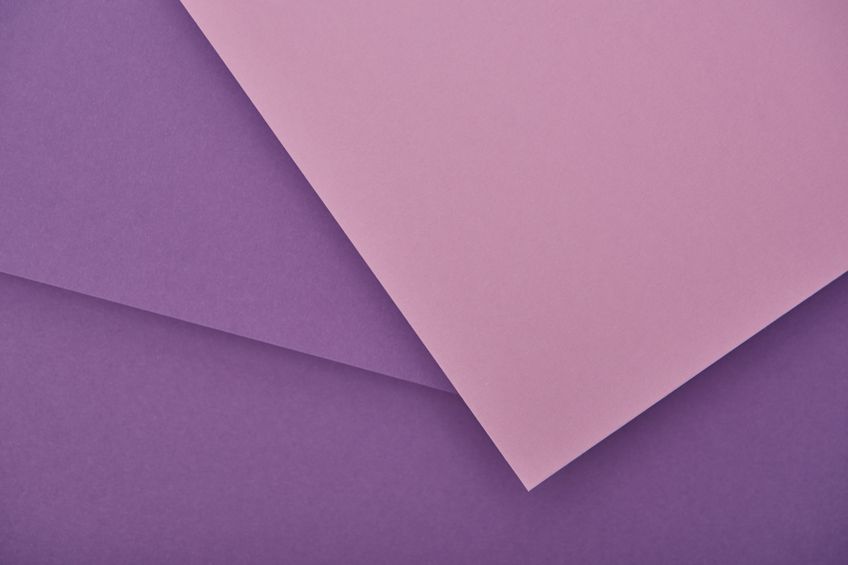
| Shade | Hex Code | CMYK Color Code (%) | RGB Color Code | Color |
| Grayish Violet | #b5a2c8 | 10, 19, 0, 22 | 181, 162, 200 | |
| Lilac | #c8a2c8 | 0, 19, 0, 22 | 200, 162, 200 | |
| Grayish Pink | #c8a2b5 | 0, 19, 10, 22 | 200, 162, 181 |
Triadic Lilac Colors
This is another popular color combination. You can find these colors set out in an even triangle shape on the color wheel. This is another combination that can create great contrast. Below you have a shade of cyan and yellow for this particular combination.
There are also other types of combinations with even more colors, for example, square and rectangular or tetradic color schemes.
| Shade | Hex Code | CMYK Color Code (%) | RGB Color Code | Color |
| Grayish Yellow | #c8c8a2 | 0, 0, 19, 22 | 200, 200, 162 | |
| Lilac | #c8a2c8 | 0, 19, 0, 22 | 200, 162, 200 | |
| Grayish Cyan | #a2c8c8 | 19, 0, 0, 22 | 162, 200, 200 |
Blending a Lilac Color With Acrylics
Since lilac is a shade of purple, to blend a lilac color with acrylic paints, you need equal amounts of red and blue to make a purple, and then add in white to create a lighter shade that is closer to lilac. Create a color palette with the different shades that you mix, so that you can recreate the same color next time you want it.

There are also different types of red and blue paints, so you could also try using a magenta color with blue and white. You can also experiment with phthalo blue, cerulean, ultramarine, or cobalt blue. Titanium white is a generally popular white when looking for an opaque color that helps to lighten a color blend.
Lilac Colors in Design
Lilac and all shades of purple can be calming and are associated with creativity. So, these colors should be perfect to use in web and fashion designs. However, would it make a good color for interior design? The simple answer is yes, and since there is a variety of lilac shades, there should be something for everyone in the color arsenal.
Lilac is a friendly color, that has an inviting and feminine feel to it.
If added to a room, it could create a relaxed atmosphere that is full of positive energy. The color can work great with contemporary designs that also have various shades of gray. When pairing it with white, it can bring in a fresher appeal. Lilac can work in two ways for a room, it can act as a background color like neutral colors as it is not an overbearing color, or you can simply bring it in as an accent color for a more feminine look.
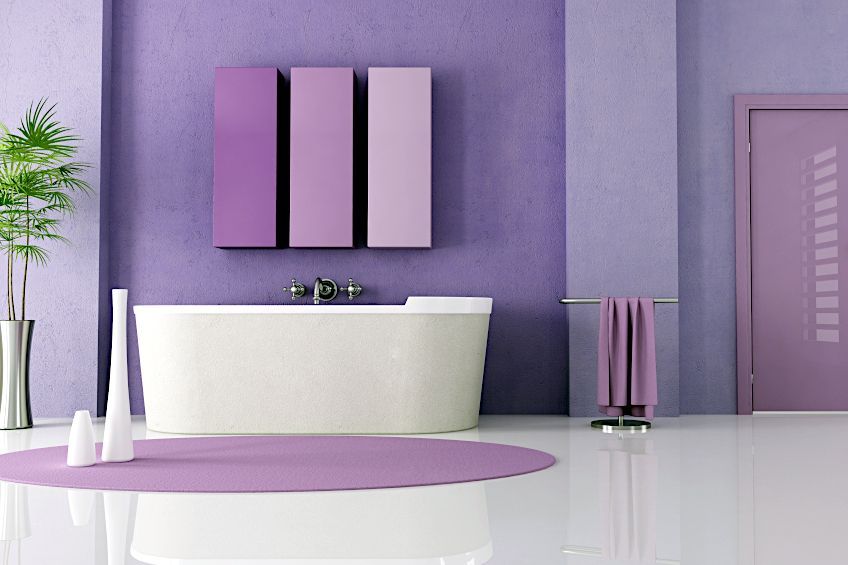
The paler or lighter shades of lilac will work best as the main color. These colors have a more feminine look than gray, and can still look fresh, yet welcoming. Since lilac is calming and relaxing, it is a great color for bedrooms as well as bathrooms. However, you can easily use the color in living areas as well.
Lilac is a beautiful shade of purple that has gained popularity in recent years and is a color you can use for many purposes. Create stylish outfits or make lilac a part of your webpage design and color scheme. Lilac is also an amazing color to use for interior design. Last, but not least, lilac, and other shades of purple can be used to create amazing paintings.
Frequently Asked Questions
What Colors Go With Lilac?
Lilac can work well with many colors, including shades of green, orange, and yellow. Lilac colors also work amazingly well with shades of gray and other neutral colors like white. A light blue can also help to make lighter shades of lilac stand out more.
Are Lilac and Lavender Colors the Same?
When it comes to lavender vs. lilac, these are two different colors. Both colors are seen as shades of purple, however, lavender has more of a purplish-blue undertone, while lilac has a pinkish undertone.
What Does the Lilac Color Symbolize?
Lilac is part of the purple family and retains some of its qualities like luxury, spirituality, creativity, and royalty. Lilac also represents innocence, purity, and the emotions of love. Lilac is feminine and friendly, but it can also be a color that conveys a sense of immaturity.
In 2005, Charlene completed her Wellness Diplomas in Therapeutic Aromatherapy and Reflexology from the International School of Reflexology and Meridian Therapy. She worked for a company offering corporate wellness programs for a couple of years, before opening up her own therapy practice. It was in 2015 that a friend, who was a digital marketer, asked her to join her company as a content creator, and this is where she found her excitement for writing.
Since joining the content writing world, she has gained a lot of experience over the years writing on a diverse selection of topics, from beauty, health, wellness, travel, and more. Due to various circumstances, she had to close her therapy practice and is now a full-time freelance writer. Being a creative person, she could not pass up the opportunity to contribute to the Art in Context team, where is was in her element, writing about a variety of art and craft topics. Contributing articles for over three years now, her knowledge in this area has grown, and she has gotten to explore her creativity and improve her research and writing skills.
Charlene Lewis has been working for artincontext.org since the relaunch in 2020. She is an experienced writer and mainly focuses on the topics of color theory, painting and drawing.
Learn more about Charlene Lewis and the Art in Context Team.
Cite this Article
Charlene, Lewis, “Lilac Color – Exploring Lilac Purple and the Colors That Go With It.” Art in Context. June 17, 2022. URL: https://artincontext.org/lilac-color/
Lewis, C. (2022, 17 June). Lilac Color – Exploring Lilac Purple and the Colors That Go With It. Art in Context. https://artincontext.org/lilac-color/
Lewis, Charlene. “Lilac Color – Exploring Lilac Purple and the Colors That Go With It.” Art in Context, June 17, 2022. https://artincontext.org/lilac-color/.




